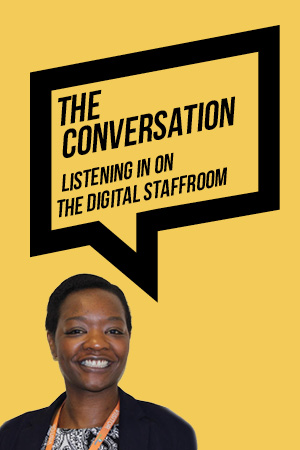I would be lying if I said that my bedside table was stacked with the latest educational must-reads.
In fact, I try to approach my reading habits with some notion of work-life balance. Thus, I am not ashamed to say that there is always room for a bit of low-brow Jack Reacher in my life.
While it may be a bit of a reach to compare a book on education with the rippling masculinity of Lee Child’s muscle-bound hero, Leadership dialogues II is nonetheless his equal in terms of its lean, incisive efficiency to grapple with complex problems.
This is a nifty little book that fits easily into my busy life: I can pick it up and put it down, and I can start at different points and flit back and forth as my fancy takes me. Critically, for a relatively small investment of time, the returns can be huge.
This is not a one-size-fits-all book that tells me what to do. This is a very practical work that helps me work with my team to fathom actionable responses to key issues in our context. It is a thinking book that sparks values-led discussion and decision making in devising innovative approaches to stubborn issues in an ever-changing educational landscape.
This is a nifty little book that fits easily into my busy life
Leadership dialogues II helps us to wrestle with eight contemporary themes such as middle leadership, staffing models and evidence-based practice, which are each subdivided into five sections.
Offering a neatly packaged club sandwich of ideas, research and questions for debate, it saves time by acting like a supercharged executive summary that would otherwise have taken some poor soul hours to pull together.
Rather like Reacher himself, this is a book focused on action rather than words. Granted, we may not be beating up the bad guys, but the discussion generated can be equally as satisfying, especially when you have that breakthrough, light-bulb, penny-dropping “oh yeah!” moment that triggers real context-based action that improves the life chances of our kids.
This book is very quick to engage with; as the authors themselves assert, it is a case of “think, discuss, act”. The resources contained within it, and those which can be handily downloaded in either PDF or Word format, offer further frameworks for discussion, debate and action. It is also a book about action and integrity.
As Harris and West-Burnham state, “the best people to interrogate the problems and find the answers are those people working in, leading and governing these schools every day”.
While Leadership dialogues II may not make you go weak at the knees, it definitely has moral purpose at its heart
At Thistley Hough we have debated long into the night on the thorny issue of equality for all our students. Infuriatingly, and despite all that we do, we still have some where we fall wide of the mark.
At an SLT meeting a couple of weeks ago we tackled this book’s chapter on “securing equity and engagement” to focus our discussion. Team members were guided by the section discussion, and the key questions gave us more momentum and direction than before. The downloaded resources then helped shape our next steps.
We all then left with some homework of our own to report back in a couple of weeks. For those of us who are time poor, this was a very efficient way to plan a fruitful session. Rather than drifting in the darkness, we quickly found ourselves in the well-lit streets of new thinking. We’re not done yet, but I am hopeful that the denouement will be spectacular.
While Leadership dialogues II may not make you go weak at the knees, it definitely has moral purpose at its heart.
Suitable for any educational setting, I imagine that most leaders will find a fair few things to gnaw on. Fair enough, I didn’t take fully to all the downloadable resources, but I am left feeling empowered that I too can fight the unwinnable and come out on top.
In my mind, anything that inspires creative thought in the fight to secure social mobility is worth a go.













Your thoughts